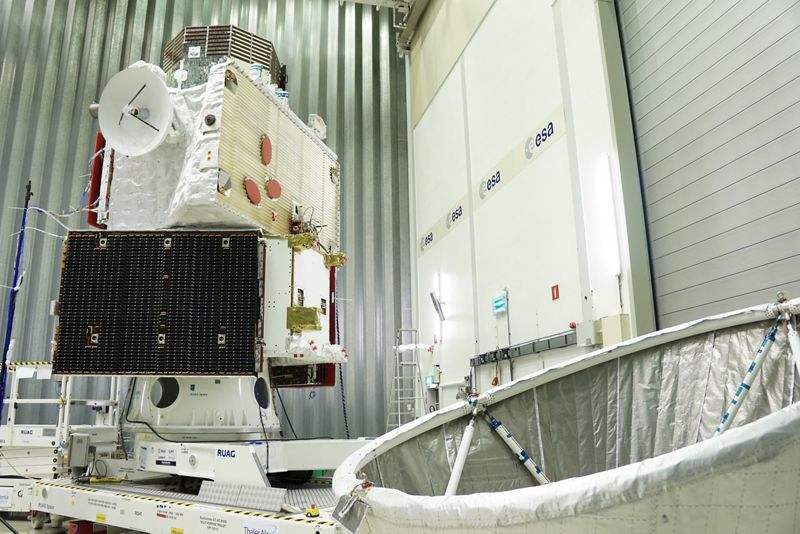BepiColombo, Europe's first mission to Mercury, will set off in October 2018 on a seven-year journey to the smallest and least explored rocky planet in our Solar System.
The European Space Agency (ESA), the Japanese Aerospace Exploration Agency (JAXA) and Airbus — the industrial prime contractor leading a consortium of 83 companies from 16 countries — are close to completing the test campaign for the BepiColombo mission. The 4t spacecraft is scheduled to be shipped to Europe´s spaceport Kourou in French Guiana in March 2018.
The Sun’s glare makes it impossible to study Mercury in detail using telescopes and the extreme heat and proximity to the Sun make it hard to reach. So far, only two NASA missions have visited Mercury: Mariner 10 in the 1970’s and Messenger, which orbited the planet from 2011 until it ran out of fuel in April 2015.
ESA and JAXA have teamed up for the mission. Named after the Italian professor Giuseppe ‘Bepi’ Colombo, who was instrumental in making the Mariner 10 mission such a success, the mission is made up of two separate orbiters, the Mercury Planetary Orbiter (MPO supplied by ESA) and the Mercury Magnetospheric Orbiter (MMO supplied by JAXA).
After seven years of travel, and 18 orbits around the Sun to enter Mercury’s orbit, the Mercury Transfer Module (MTM) will be ejected and the MPO will take over propulsion tasks. By means of a free gravity capture the stack will swing into orbit around Mercury and then descend successively to the scientific orbits. The MMO will be spin ejected in its orbit before the sunshield is ejected and the MPO descends further to its target orbit. The orbiters will then conduct the most thorough examination of Mercury yet undertaken.
The BepiColombo mission will examine the peculiarities of Mercury´s internal structure and magnetic field generation, and how it interacts with the Sun and solar wind. It will investigate surface features and chemistry, such as the ice in permanently shadowed craters at the poles. The mission's science will significantly improve our understanding of the formation of our Solar System, and the evolution of planets close to their parent stars.

